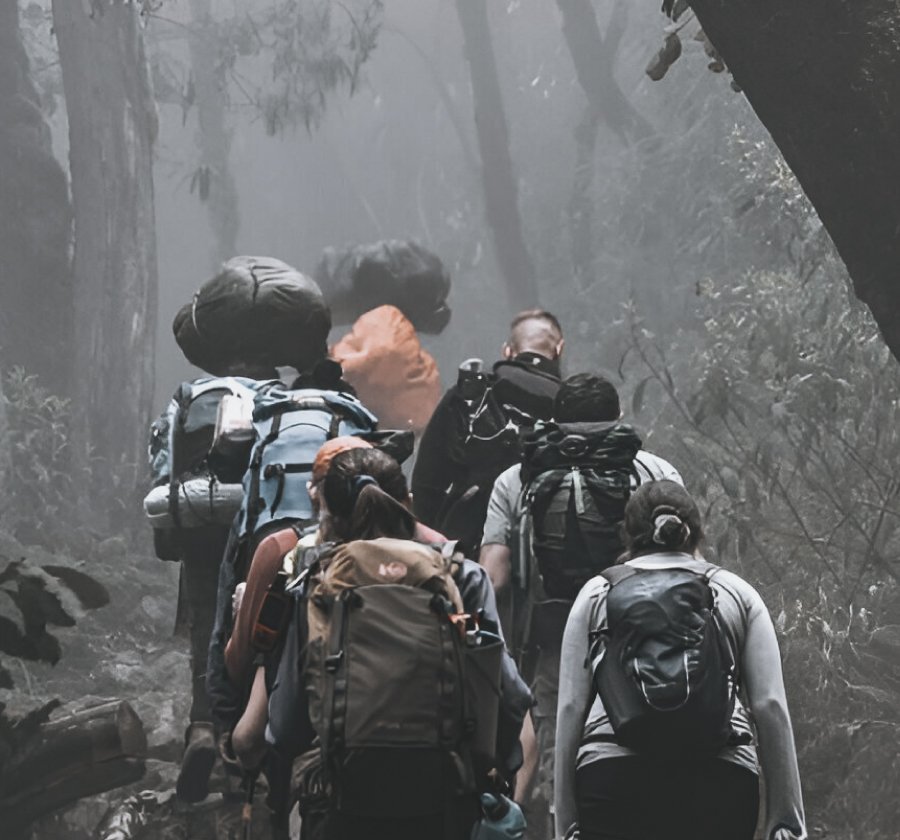
- Home
- »
- Mt. Trekking
- »
- Exploring Kilimanjaro’s Ecological Layers

Mount Kilimanjaro, the highest peak in Africa, is not just a towering giant famous for its snowy summit but also a magnificent showcase of diverse ecosystems. As climbers ascend its slopes, they traverse through distinct biomes, each with its unique flora, fauna, and climate. This journey through Kilimanjaro’s ecological layers offers a vivid glimpse into the complex and beautifully interwoven tapestry of nature. Let’s explore these layers, from the dense rainforests at its base to the arctic conditions at its peak.
- The Cultivated Lower Slopes: The journey begins on the lower slopes of Kilimanjaro, where the fertile volcanic soil supports lush farmland. Here, local communities cultivate coffee, bananas, and a variety of other crops. This region is not just an agricultural hub but also a vital part of the mountain’s ecosystem, providing food for both humans and wildlife.
- The Montane Forest: Ascending further, the landscape transforms into dense montane rainforests. These misty forests are teeming with life. Towering trees draped in moss are home to a variety of wildlife, including the blue monkey, the Kilimanjaro tree hyrax, and myriad bird species like the Hartlaub’s turaco. The forest floor, rich with ferns and wildflowers, adds to the biodiversity that makes this layer a critical habitat.
- The Heather and Moorland: Beyond the forest, the environment changes again as you enter the Heather and moorland zone. This area is characterized by lower temperatures and higher winds, with vegetation adapted to the harsher conditions. Giant heathers, over 10 feet tall, dominate the landscape, interspersed with grasses and unique plants like the Dendrosenecio Kilimanjaro, which can survive in the colder temperatures of higher altitudes.
- The Alpine Desert: As the altitude increases, the air becomes thinner and drier, marking the transition into the Alpine Desert. Vegetation is sparse in this zone, but life persists. Hardy plants such as lobelias and everlasting flowers dot the landscape, surviving in extreme conditions with adaptations like water storage in leaves and stems. The stark beauty of this zone is breathtaking, with vast open skies and panoramic views of the mountain.
- The Summit: Arctic Conditions: The final ascent to the summit of Kilimanjaro leads through a landscape that resembles the Arctic. The air is thin and oxygen levels are low. Temperatures can drop well below freezing, especially at night. Very few life forms can survive here, but those that do, like the hardy lichen, are a testament to the resilience of life. The summit, Uhuru Peak, offers a frozen, desolate beauty that is starkly different from the lush lower slopes.
Kilimanjaro’s diverse ecosystems are a remarkable feature of this great mountain, each layer offering a different world with unique challenges and beauty. This ecological variety not only supports a wide range of biological diversity but also provides an unforgettable experience for those who climb it. From lush forests to arctic summits, Kilimanjaro is a vivid reminder of the natural world’s adaptability and richness.
Are you ready to experience the natural wonders of Kilimanjaro? Prepare for a journey that is as educational as it is exhilarating. Each step up Kilimanjaro brings a new world into view, inviting climbers to not just conquer a mountain but to understand and appreciate the complex ecosystems that makeup one of the planet’s most extraordinary environments.